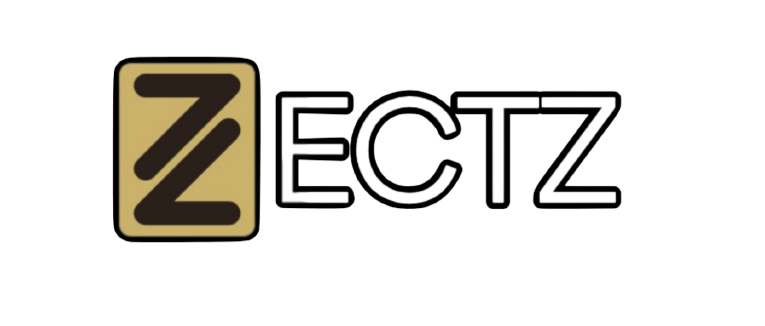Discover a comprehensive guide with 20 amazing tips to Move Your Family to Canada or the US with Low Costs. From visa options to budgeting and settling in, we’ve got you covered. Save money and ensure a smooth transition with our expert advice.
Relocating your family to a new country is a life-changing decision, filled with both excitement and challenges. The United States and Canada are two of the most sought-after destinations for families due to their robust economies, high standards of living, and diverse cultures. However, moving internationally can be expensive. This comprehensive guide aims to provide practical tips and strategies to help you move your family to Canada or the US while minimizing costs.
1. Research and Planning
A. Learn the Immigration Policies on How to Move Your Family to Canada or the US with Low Costs
Before making any decisions, familiarize yourself with the immigration policies of both Canada and the US. Each country has its own set of visa categories, requirements, and application processes.
Recommended: Apply for Canadian Permanent Residence Visa – Travel Visa
- Canada: Canada offers several pathways for immigration, including Express Entry, Provincial Nominee Programs (PNPs), family sponsorship, and more. The Express Entry system is a popular choice for skilled workers, and it uses a points-based system to assess candidates.
- US: The US has multiple visa categories such as family-sponsored visas, employment-based visas, and the Diversity Visa Lottery. Employment-based visas (like H-1B) are common for skilled workers, while the family-sponsored route requires a sponsor who is a US citizen or permanent resident.
B. Budgeting
Moving abroad requires a detailed budget to cover all potential expenses. These include visa fees, relocation costs, temporary housing, travel expenses, and initial living costs. Create a spreadsheet to track these costs and identify areas where you can save.
C. Timeline and Documentation
Develop a timeline for your move, factoring in the time needed for visa processing, securing housing, and other logistical considerations. Keep all essential documents, such as passports, birth certificates, and academic records, organized and readily accessible.
2. Choosing the Right Immigration Pathway
A. Skilled Worker Programs
Both Canada and the US offer programs for skilled workers. Understanding the nuances of these programs can help you choose the most suitable pathway.
- Canada’s Express Entry: This is ideal for skilled workers and is based on a points system. Points are awarded for factors like age, education, work experience, and language proficiency. To maximize your points, consider improving your language skills or obtaining a higher educational credential.
- US Employment-Based Visas: Categories such as the H-1B visa require a job offer from a US employer. Alternatively, the EB-5 visa allows for investment in a US business, potentially leading to permanent residency.
B. Family Sponsorship
If you have relatives in Canada or the US, family sponsorship might be a viable option.
- Canada: Spouses, common-law partners, dependent children, parents, and grandparents can be sponsored. The sponsor must meet financial requirements to ensure they can support the relative.
- US: Immediate relatives of US citizens, including spouses, children, and parents, have priority in the immigration process. Legal permanent residents (green card holders) can also sponsor family members, but the wait times might be longer.
C. Study and Work Programs
Studying or working temporarily in Canada or the US can be a stepping stone to permanent residency.
- Canada: International students can apply for a study permit, which often allows them to work part-time during their studies. After graduation, they may be eligible for a Post-Graduation Work Permit (PGWP), which can lead to permanent residency through Express Entry.
- US: The F-1 student visa allows international students to study in the US. Optional Practical Training (OPT) provides an opportunity to work in the US after graduation, and this experience can be beneficial for securing a longer-term employment visa.
3. Financial Preparation
A. Saving Money
Start saving well in advance of your move. Consider setting up a dedicated savings account and contributing to it regularly. Reduce unnecessary expenses and explore additional income sources to boost your savings.
B. Understanding Currency Exchange
Currency exchange rates can significantly impact your budget. Monitor exchange rates and transfer money when the rates are favorable. Services like TransferWise (now Wise) offer competitive rates and lower fees compared to traditional banks.
C. Affordable Housing
Finding affordable housing is crucial. Research neighborhoods in your destination city that offer reasonable rent and a good quality of life. Temporary housing options like Airbnb or short-term rentals can be useful while you search for a long-term home.
4. Employment Strategies
A. Job Search
Start your job search well before you move. Utilize online job boards like Indeed, Glassdoor, and LinkedIn to find opportunities. Networking is also essential; join professional groups and attend industry events to make connections in your field.
B. Resume and Interview Preparation
Tailor your resume to match the standards and expectations in Canada or the US. Highlight your international experience and transferable skills. Practice for interviews to ensure you can confidently communicate your qualifications and enthusiasm.
C. Understanding Employment Laws
Familiarize yourself with employment laws in your destination country. Understand your rights as an employee, including minimum wage laws, working hours, and benefits. This knowledge will help you negotiate better terms and protect your interests.
5. Education and Schooling
A. Researching Schools
For families with children, finding the right school is a priority. Research public, private, and international schools in your destination city. Consider factors like curriculum, extracurricular activities, and proximity to your home.
B. Enrollment Process
Understand the enrollment process for schools in your new country. Prepare all necessary documents, such as previous school records, immunization records, and proof of residence. Some schools may require entrance exams or interviews.
C. Educational Support
Look for educational support services that can help your children adjust to a new school system. Language support programs, tutoring, and counseling services can be beneficial in easing the transition.
6. Healthcare
A. Health Insurance
Both Canada and the US have different healthcare systems. In Canada, healthcare is publicly funded and most services are free for residents. However, new immigrants may need to wait for their provincial health coverage to start, so consider purchasing temporary private insurance.
In the US, health insurance is essential as medical costs can be very high. Research employer-sponsored plans or purchase insurance through the Health Insurance Marketplace.
B. Understanding Healthcare Services
Familiarize yourself with the healthcare services available in your destination. Find local clinics, hospitals, and family doctors. Ensure your family’s vaccinations are up-to-date and carry a copy of your medical records.
C. Emergency Services
Learn how to access emergency services in your new country. In Canada, emergency medical services can be reached by dialing 911. The same number is used in the US. Knowing the local emergency protocols can be crucial in times of need.
7. Housing and Accommodation
A. Renting vs. Buying
Decide whether renting or buying a home is more suitable for your family. Renting is often more flexible and requires less upfront investment, making it a good option for newcomers. Buying a home can be beneficial in the long term if you plan to settle permanently.
B. Finding a Home
Use online platforms like Zillow, Realtor.ca, and Craigslist to search for housing options. Work with a local real estate agent who can provide insights into the housing market and help you find a suitable home within your budget.
C. Lease Agreements and Tenant Rights
Understand the terms of lease agreements and your rights as a tenant. Read the lease carefully before signing and clarify any doubts with the landlord. Knowing your rights can help you avoid potential disputes and protect your interests.
8. Moving Logistics
A. Hiring a Moving Company
Research and compare moving companies to find one that offers reliable services at a reasonable price. Consider factors like the company’s reputation, insurance options, and additional services such as packing and unpacking.
B. Decluttering
Reduce moving costs by decluttering your belongings before the move. Sell, donate, or dispose of items you no longer need. This will not only save money but also make the moving process more manageable.
C. Shipping Options
If you have large items to move, explore different shipping options. Sea freight is usually more affordable than air freight, but it takes longer. Calculate the costs and delivery times to choose the best option for your needs.
9. Settling In
A. Community Integration
Integrating into the local community can make your transition smoother. Participate in community events, join local clubs or groups, and get to know your neighbors. Building a support network will help you feel more at home.
B. Cultural Adaptation
Adapting to a new culture can be challenging. Take the time to learn about the customs, traditions, and social norms of your new country. Encourage your family to embrace new experiences while maintaining your cultural identity.
C. Language Skills
Improving your language skills can significantly enhance your integration process. Enroll in language classes, practice with native speakers, and use language-learning apps to improve your proficiency.
10. Legal and Administrative Tasks
A. Social Security Number and SIN
In the US, you will need a Social Security Number (SSN) for employment and accessing various services. In Canada, the equivalent is the Social Insurance Number (SIN). Apply for these numbers as soon as you arrive.
B. Driver’s License
Exchange your current driver’s license for a local one. Both Canada and the US have specific processes for foreign license holders. Research the requirements and complete any necessary tests or documentation.
C. Bank Accounts
Open a local bank account to manage your finances more efficiently. Compare different banks to find one that offers favorable terms and services for newcomers. A local bank account will facilitate transactions like paying rent, utilities, and receiving your salary.
11. Taxes
A. Understanding Tax Obligations
Both Canada and the US have complex tax systems. Understand your tax obligations as a resident, including income tax, sales tax, and property tax. Consider consulting a tax advisor to ensure compliance and optimize your tax situation.
B. Filing Taxes
Learn how to file taxes in your new country. Both Canada and the US require annual tax returns, and there may be deductions or credits available to you. Utilize online tax preparation services or seek professional assistance to file accurately and on time.
C. Double Taxation Treaties
Research any tax treaties between your home country and your new country to avoid double taxation. These treaties can provide relief and prevent you from being taxed on the same income in both countries.
12. Cost of Living
A. Comparing Cost of Living
The cost of living varies widely between cities in Canada and the US. Research the cost of essentials such as housing, groceries, transportation, and healthcare in your destination city. Websites like Numbeo provide detailed cost of living comparisons.
B. Budgeting for Living Expenses
Create a monthly budget to manage your living expenses effectively. Include all necessary expenses like rent, utilities, groceries, transportation, and discretionary spending. Regularly review and adjust your budget to ensure you stay on track.
C. Frugal Living Tips
Adopt frugal living habits to save money. Cook at home instead of dining out, use public transportation, take advantage of free community events, and shop for bargains. Small changes in daily habits can add up to significant savings.
13. Public Services
A. Accessing Public Services
Learn how to access public services in your new country. These may include libraries, community centers, public transportation, and recreational facilities. Utilizing these services can enhance your quality of life and reduce expenses.
B. Childcare and Early Education
If you have young children, research childcare options and early education programs. Public daycare and preschool programs may be available, offering affordable childcare solutions.
C. Libraries and Community Centers
Public libraries and community centers offer a wealth of resources and activities for families. They provide access to books, internet, educational programs, and recreational activities, often at no cost.
14. Transportation
A. Public Transportation
Public transportation can be a cost-effective and convenient way to get around. Research the public transit options in your destination city, including buses, trains, and subways. Purchase monthly passes to save money on regular commutes.
B. Car Ownership
If you decide to own a car, consider the associated costs such as insurance, maintenance, fuel, and parking. Look for affordable car insurance options and consider buying a fuel-efficient or used car to reduce expenses.
C. Biking and Walking
Biking and walking are eco-friendly and cost-effective transportation options. Many cities in Canada and the US have developed bike lanes and pedestrian-friendly infrastructure. Invest in a good bicycle and safety gear if you plan to use biking as your primary mode of transportation.
15. Food and Groceries
A. Affordable Grocery Shopping
Find affordable grocery stores and markets in your area. Compare prices and shop at discount grocery stores or wholesale clubs like Costco. Use coupons and take advantage of sales to save on your grocery bill.
B. Cooking at Home
Cooking at home is significantly cheaper than eating out. Plan your meals, create a shopping list, and prepare meals in bulk to save time and money. Experiment with budget-friendly recipes that use seasonal and locally available ingredients.
C. Food Assistance Programs
If you need financial assistance for food, explore local food assistance programs. Both Canada and the US have food banks and government programs like SNAP (Supplemental Nutrition Assistance Program) that can provide support to families in need.
16. Utilities and Services
A. Comparing Utility Providers
Research and compare utility providers for services like electricity, water, gas, and internet. Choose providers that offer the best rates and consider bundling services to save money. Monitor your usage and implement energy-saving practices to reduce bills.
B. Affordable Internet and Mobile Plans
Find affordable internet and mobile phone plans that meet your needs. Look for promotions and discounts, and consider prepaid or family plans to reduce costs. Evaluate your data usage and choose a plan that aligns with your consumption.
C. Reducing Utility Costs
Implement strategies to reduce utility costs, such as using energy-efficient appliances, reducing water consumption, and adjusting your thermostat. Small changes in daily habits can lead to significant savings on your utility bills.
17. Entertainment and Recreation
A. Free and Low-Cost Activities
Explore free and low-cost recreational activities in your community. Many cities offer free access to parks, hiking trails, museums, and community events. Take advantage of these opportunities to enjoy quality family time without breaking the bank.
B. Budget-Friendly Entertainment
Find budget-friendly entertainment options such as movie nights at home, visiting local attractions, or participating in community sports leagues. Look for discounts and deals on entertainment activities to save money.
C. Community Events
Attend community events and festivals that are often free or low-cost. These events provide opportunities to connect with the local culture and community while enjoying entertainment and activities for the whole family.
18. Social Support
A. Building a Support Network
Building a support network can ease the transition to a new country. Connect with other expatriates, join local clubs or organizations, and participate in community activities. Having a support network can provide emotional support and practical assistance.
B. Support Services for Newcomers
Utilize support services for newcomers, such as settlement agencies and immigrant support organizations. These services can provide valuable resources, information, and assistance to help you settle in your new country.
C. Language and Cultural Support
Seek out language and cultural support programs that can help you and your family adjust to your new environment. These programs often offer language classes, cultural orientation, and social activities to facilitate integration.
19. Legal and Financial Advice
A. Consulting Professionals
Consider consulting legal and financial professionals to ensure you are making informed decisions. Immigration lawyers, financial advisors, and tax consultants can provide expert advice and help you navigate complex legal and financial matters.
B. Legal Resources
Access legal resources that can provide information and assistance on various issues, such as housing, employment, and consumer rights. Many communities offer free or low-cost legal aid services for newcomers.
C. Financial Planning
Develop a financial plan to manage your finances effectively. This includes budgeting, saving, investing, and planning for the future. A well-thought-out financial plan can help you achieve your financial goals and ensure long-term stability.
20. Long-Term Integration
A. Citizenship and Permanent Residency
Consider the long-term goal of obtaining citizenship or permanent residency in your new country. Research the requirements and benefits of these statuses and plan your pathway accordingly.
B. Continuous Learning
Continuously learn and adapt to your new environment. This includes staying informed about changes in laws, policies, and opportunities that may affect your life in your new country.
C. Giving Back
Engage in community service and volunteer work to give back to your community. This not only benefits others but also helps you build connections and integrate more deeply into your new society.
Conclusion
Moving your family to Canada or the US can be a rewarding experience, offering numerous opportunities for personal and professional growth. By carefully planning and implementing cost-saving strategies, you can make this transition smoother and more affordable. Remember that preparation, research, and a positive attitude are key to successfully settling in your new home.
5 FAQs About the “20 Amazing Guide to Move Your Family to Canada or the US with Low Costs”
1. What is the main focus of the guide?
The primary focus of the guide is to provide practical and cost-effective strategies for relocating a family to either Canada or the United States. It covers various aspects of the moving process, from initial planning and budgeting to finding affordable housing and managing living expenses in the new country.
2. What type of cost-saving tips does the guide offer?
The guide offers a wide range of cost-saving tips including advice on:
- Finding and securing affordable housing.
- Utilizing cost-efficient moving services or DIY moving methods.
- Managing travel expenses.
- Navigating immigration processes without high legal fees.
- Identifying cost-effective neighborhoods and cities.
3. Does the guide include information on visa and immigration processes?
Yes, the guide provides detailed information on the visa and immigration processes for both Canada and the United States. It includes step-by-step instructions on how to apply for different types of visas, required documentation, and tips on avoiding common pitfalls that can lead to additional costs or delays.
4. Are there specific recommendations for families with children?
Absolutely, the guide offers tailored advice for families with children, such as:
- Tips on finding good, yet affordable, schools and childcare options.
- Insights on community resources and family-friendly neighborhoods.
- Strategies for integrating children into new educational systems and social environments smoothly and cost-effectively.
5. How can the guide help with job hunting in the new country?
The guide includes comprehensive sections on job hunting, offering practical advice on:
- Effective job search strategies tailored to the Canadian and US job markets.
- Tips on creating a standout resume and cover letter.
- Guidance on utilizing job search platforms and networking opportunities.
- Information on recognizing and validating foreign credentials to increase job prospects.
Find also Top 20 Travel Ideas to Apply for Vacation









